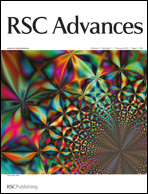The binding interaction of hydrolyzed cisplatin with the nucleobases guanine and adenine has been investigated using density functional reactivity theory (DFRT). The energy changes involved in the interaction of both mono-aqua and di-aqua cisplatins with these two purine bases are explored on the basis of different reactivity parameters of DFRT. As observed by earlier experimental and theoretical studies, the present approach also reveals that interaction of the cisplatin di-aqua complex is stronger than the corresponding mono-aqua complex and, more importantly, interactions of both mono and di-aqua complexes of cisplatin are stronger with guanine than with adenine. Interestingly, all these observations are based on the energy components and charge transfer quantities which depend solely on the electronic properties of the isolated aqua-cisplatins and nucleobases (i.e., not on the electronic properties of the adducts). Moreover, the sign of the energy components and charge transfer values clearly demonstrate the electron donor and acceptor nature of the purine bases and aqua cisplatins, respectively. The results are also consistent across all three methods (both ab initio and DFT) adopted in this study.

You have access to this article
 Please wait while we load your content...
Something went wrong. Try again?
Please wait while we load your content...
Something went wrong. Try again?


 Please wait while we load your content...
Please wait while we load your content...